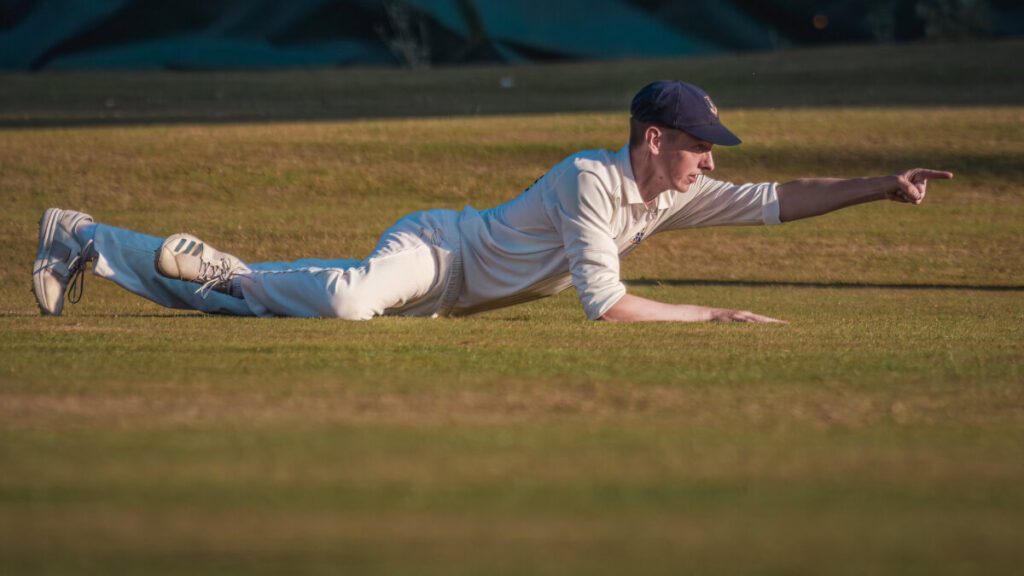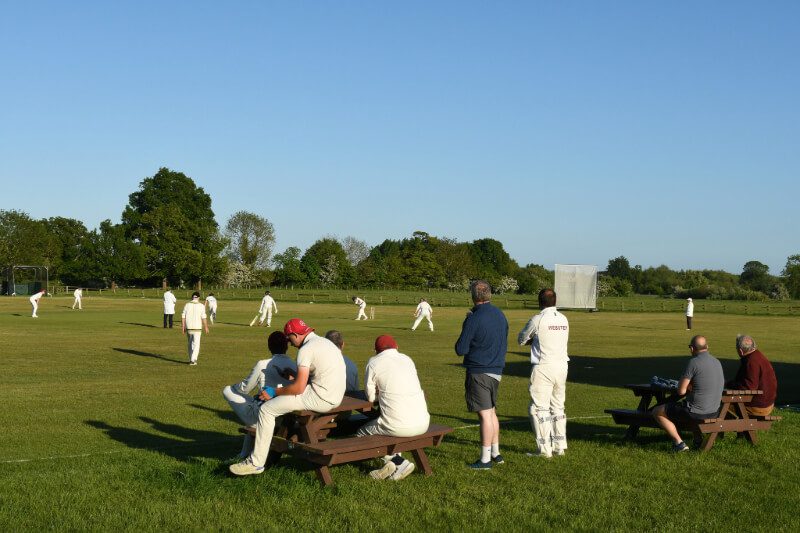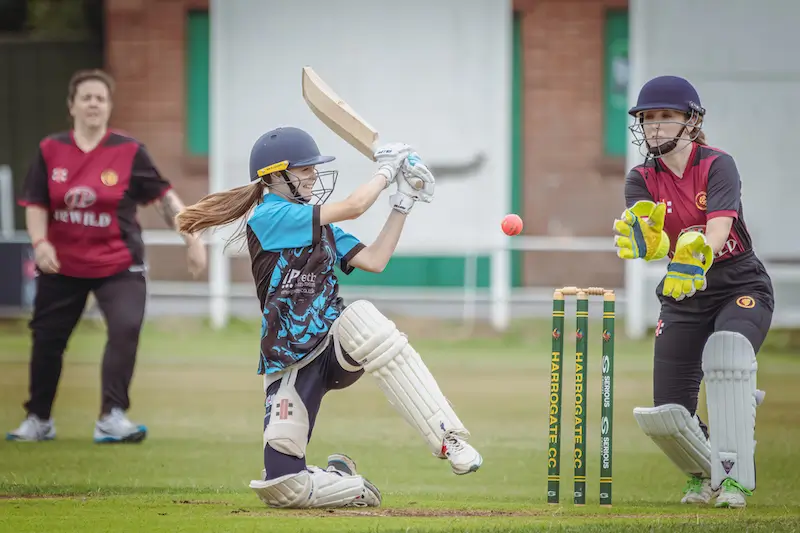Cricket team selection has been on my radar to write about for ages. So many angles. It can be pretty controversial and I’ve worn the various hats as peripheral cricketer to captain with the nuances and pressures that come with both.
If we take it as given that everyone wants to play, how do cricket clubs pick their best teams? What are the challenges? What are the mistakes? Have attitudes changed towards selection?
Let’s dive in…
(📸 Photos used here are for illustration and don’t reflect the views of any particular player or club – unless they’re directly quoted of course.)

Ok, first up is a fact about me that you won’t know.
At most clubs I’ve played at, I’ve (politely) refused to play for the first team at some point. (This might already be a black spot for some of you. Not a team player etc… but hear me out.)
It began at school where I was a left-arm seam bowler of some promise but probably on the edge of first-team cricket. I had a settled role in the seconds, enjoyed success with the ball and had a group of mates I looked forward to training and matches with.
Saying no to first-eleven cricket was partly a fear of stepping up but also a recognition that I would bat last and not get a bowl. The teacher’s face was priceless at the news – pretty sure it was first – and I was never asked again which suited me just fine.

Should you play where you’re picked?
Well, he says diplomatically – most do – or selection would be even more difficult than it is.
But we can sometimes forget that cricket clubs are member clubs for all. There is a democratic thread running through them whereby everyone pays the same subs (largely) and there has to be a fluidity in thought and opportunities, which I’m sure there is at most clubs.
Trying to get the strongest XI while giving everyone a game and pleasing all players (and parents) is a fool’s errand. I know, I’ve been there and have the proverbial t-shirt.
As second-team captain, finalising your team with a strong bowling attack (or one that had at least the requisite number of working limbs) was satisfying / a relief.
Cue a text on Friday from the firsts that injuries or availability meant that actually, could you find another wicketkeeper and opening bowler? This is club cricket. It happens everywhere but that doesn’t make it any less problematic.

One-club ethos
I think attitudes to selection have changed (at some clubs) as availability, how much we play and how often we are willing to commit to the game has shifted.
There is now more emphasis beyond the first eleven and what constitutes success as a club which in turn impacts how clubs pick sides.
A forward-thinking club, its selection panel and captains needs to balance the immediate need to fill spots with 1st XI at its best, allied with not crippling other squads and trying to give everyone a fair crack.
Of course, there might be titles, promotion, relegation and cup honours at stake across teams to factor in.
Pinch of salt, eh?
Keeping everyone happy is a fool’s errand but dialogue and seeing the value of the third eleven in the Dales Council as much as the firsts in the Bradford Premier League buys plenty of goodwill.

Juniors in senior cricket
I was once that junior playing in senior cricket and given absolutely no role whatsoever. Yay, you have eleven on a teamsheet but I’ve had a rubbish day, paid a tenner, lost my Saturday and improved my game not one bit.
There is give and take, many reasons for picking the sides we do and sometimes nuances (or blatant disagreements) that affect who is chosen and who is not. For juniors getting game-time in senior cricket, there’s nothing worse than going fine leg to long on while being inked in for number eleven.
That might legitimately be based on ability, form or the standard of cricket. Or it could be a poor decision with ramifications.
It’s true that playing alongside adults is a step up – but you can only play the ‘experience’ card so often. I’m sure clubs, coaches and captains also have parents who think their child should be doing more. That’s only natural and they might be right, they might be wrong.
Of course, sometimes the game dictates a lack of opportunities (opening bowlers or batters cash in, leaving others to twiddle their thumbs) but it’s a mistake to just play a junior in a largely redundant role to fill a last-minute vacancy and because they’re fit or have a strong arm.
What saddens me is hearing, as I have down the years, of juniors being told to move clubs to a more ‘fashionable’ one if they’re serious about progressing.
Now, if you are smashing triple hundreds in Division Eight of the Nidderdale League, a) that’s not going to get Anthony McGrath’s attention (sorry) and b) you might be happy where you are or c) need to move to play at a higher standard (fair enough).
Clubs lower down the the great pyramid of Yorkshire club cricket can feel aggrieved at nurturing young talent only to see that boy or girl depart. It happens all of the time. To reference the Rubik’s Cube headline, the number of permutations as to why are plentiful.
Ultimately, I guess it’s about having an enjoyable experience of cricket, wherever you find it.
Another angle is the glass ceiling. If a junior (or senior) cricketer is not given the chance to show what they can do at their current home. This stymies their potential or worse still, encourages them to give up the game altogether.
Development leagues and Sunday cricket (like my visit to Keighley CC) feel more clear-cut and (generally speaking) are on board with the balance between league points and how they select teams, give chances to juniors during matches.
Do you win at all costs or give younger players a chance to succeed or fail? if you don’t give those opportunities then they might get fed up and leave anyway.
There’s also the added headache when clubs have such disparity between say their firsts and seconds in terms of divisions within leagues. It can be a mountain that makes selection that bit more tricky.

Hallam and Harrogate
I thought I’d get a bit of insight from two clubs with numerous teams and therefore real potential headaches in juggling priorities.
At Harrogate, they have four senior men’s teams and two senior women’s teams, along with multiple junior sides at each age group for girls and boys.
Deputy Chair George Hazel-Owram told me: “On the men’s side, we generally try and pick our strongest teams from the first team down to the third team. The strongest team will be selected based on ability, form, likely conditions and the make-up of the team required to win the particular game for the week ahead.”
He added: “The one exception to simply picking the strongest teams relates to junior players. A key part of Harrogate CC’s strategy is to develop as many talented junior players as possible. Over the past few years we have strived to make Harrogate a club where talented junior players will always be given opportunities in our senior teams.”
That means discussions on what standard a junior cricketer is at and what would best develop them – which can mean others miss out:
“This may be at the expense of an adult player who is more experienced and might score more runs or take more wickets at this particular point in time. The rationale for this would be that the junior player has far greater potential and is the future of the club and so deserves the opportunity.”
With women’s cricket, with players from 13 years old to experienced adults, it’s not always possible to pick the best XI. Particularly with games usually on Sundays where there are also county and rep games that clash.
Meanwhile at Hallam Cricket Club, Peter Charlesworth captains the sixth team who play in Division Three of the Yorkshire & Derbyshire League. I’m curious how a player pool so large across a club is organised week-to-week.

Peter said: “For Hallam senior teams this year, players were allocated to a ‘team’ for the purpose of captains collecting availability. We aimed that most captains had around 15 players in their ‘team’ with myself and the 5s having more players to gather availability from each week.”
Apparently, there is then a Hallam selection meeting on Monday evenings at their Sandygate HQ in Sheffield where captains converse and pick their players. As the lowest senior team, I imagined it might be particularly difficult and uncertain.
Peter said: “This then leaves me with a group of players to pick a team from (often very unbalanced in types of players) with those not selected told they are in my reserve list.”
He went on to say: “If there are dropouts (which are quite common), the captain losing a player picks from the team below and this filters down until it gets to me and then I get one from my reserves (if I have any).”
Therein lies another act of diplomacy. As captain, you drop a player then for reasons maybe beyond your control (injury, holiday, act of God), you have to ring up the dropped player, ask them to ditch their weekend plans and play after all!
Peter concluded: “We try to work with each other in cases of types of players moving around to make sure each team have the players they need, such as wicketkeepers, but this doesn’t always happen as captains want the best players and balance of players for their team so they can do the best.”
My reading of that subtext is that Peter is phlegmatic about what side he puts out as Hallam 6th XI and all credit to him.
Meanwhile, George at Harrogate CC said: Like any other club there are always some weeks we have too many players wanting a game and others when we don’t have enough. Making decisions on which team players should be in isn’t always straightforward and you can agonise over decisions. We try and strike a balance, be as fair as possible and keep everyone as happy as best we can.”

Over to you…
How do you pick teams? Any stories? Thoughts? Are you a captain? Coach? Player who never gets a game? Whatever your scenario, leave a comment here on Cricket Yorkshire or leave your thoughts over on Cricket Yorkshire’s Facebook page.
- 2026: Predictions and trends for grassroots cricket - December 19, 2025
- Cricket Gifts: The shortlist full of surprises[2026] - December 12, 2025
- 6 ways for cricket clubs to earn with easyfundraising - December 10, 2025